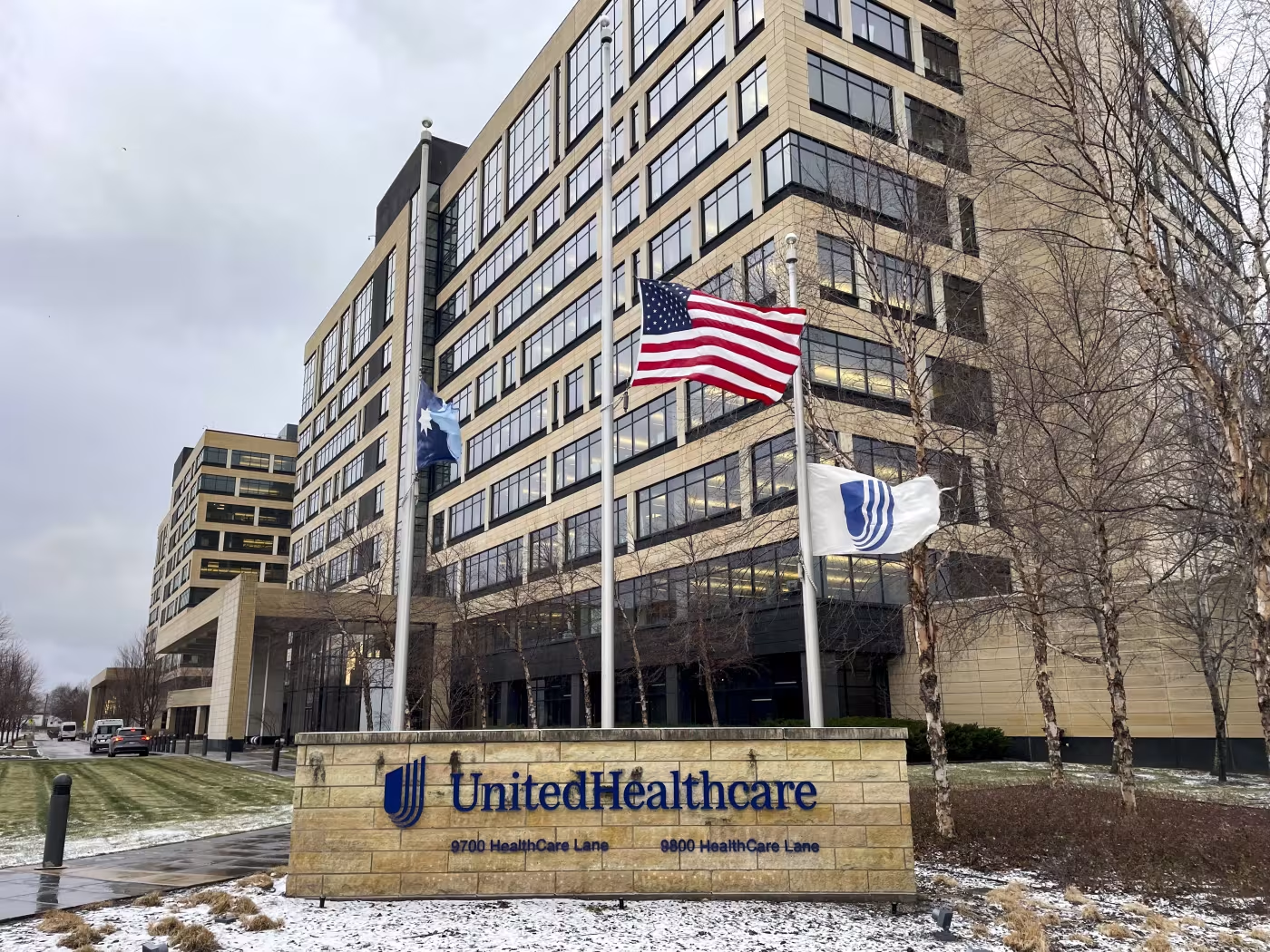Friday Report

From Washington, DC,
- OPM has posted on its website its January 15, 2025, call letter for 2026 FEHB benefit and rate proposals. Oddly enough, the 2018 call letter is dated January 11, 2017, while the 2022 call letter is dated February 17, 2021.
- The 2026 letter fails to address carrier concerns / initiatives to lower benefit and administrative costs.
- Govexec tells us,
- “The Office of Personnel Management is updating the qualifications and characteristics used to select and assess members of the Senior Executive Service for the first time in more than 15 years.
- “OPM’s updates to the SES executive core qualifications, announced Wednesday, will take effect on July 1.
- “Acting OPM Director Robert Shriver wrote in a memo to agency heads that technological advances influenced the decision to make changes to the performance criteria.”
- The American Hospital Association News informs us,
- “The Centers for Medicare & Medicaid Services Jan. 17 announced a record 24.2 million consumers selected health coverage through the Health Insurance Marketplace for the 2025 enrollment period that ended Jan. 15. The total more than doubled the number of enrollees from 2021, CMS said. Of this year’s total, 3.9 million consumers signed up for the first time.”
- and
- “The Department of Health and Human Services Jan. 17 announced 15 Medicare Part D drugs selected for the latest round of price negotiations. Negotiations will occur this year and any resulting prices will become effective in 2027. The drugs selected accounted for nearly $41 billion in total Part D gross covered prescription drug costs, or about 14%, between November 2023 and October 2024.
- “Drugmakers have until Feb. 28 to decide whether they will participate in negotiations. Prices for the first 10 drugs selected during the first round of negotiations were announced in August, with discounts ranging from 38% to 79% off list prices.”
- BioPharma Dive adds,
- “Semaglutide, the popular drug sold by Novo Nordisk as Ozempic for diabetes and Wegovy for weight loss, is among a group of widely used medicines selected by the U.S. government for the next round of price negotiations under a 2022 law aimed at curtailing pharmaceutical costs within Medicare.” * * *
- “Also on the list are Xtandi, Ibrance, Calquence and Pomalyst, blockbuster drugs for cancers of the prostate, breast, blood and bone marrow. Trelegy Ellipta, an inhaler used for asthma and chronic obstructive sleep apnea, is included, as are Otezla, a psoriasis medicine, and Vraylar, an antipsychotic.”
- Eli Liily’s semaglutide drugs sold as Mounjaro for diabetes and Zepbound for obesity are not on this list.
- Per a Labor Department news release,
- “The U.S. Departments of Labor, Health and Human Services, and the Treasury today issued their 2024 Report to Congress on the Mental Health Parity and Addiction Equity Act enforcement and implementation, which suggests that group health plans and health insurance issuers are making progress complying with the Mental Health Parity and Addiction Equity Act, but are continuing to fall short of the requirement to cover mental health and substance use disorder benefits in parity with medical and surgical benefits.”
- The Washington Post relates,
- “National security officials are creating an independent panel to examine the origins of the coronavirus pandemic, as scientists and intelligence experts continue to wrestle over the highly charged issue of how the pandemic began.
- “Jake Sullivan, the Biden administration’s national security adviser, on Sunday asked the Office of the Director of National Intelligence to assemble an outside panel of experts who would take a fresh look at the existing findings on the coronavirus and examine the government’s conclusions, according to two administration officials.
- “Biden officials say the panel’s creation, coming days before the incoming Trump administration takes office, was driven by Sullivan’s desire to understand a virus that killed more than 1 million Americans and upended society.
- “Sullivan also requested on Dec. 17 that intelligence agencies update their own assessments of the pandemic’s origins, according to one official who spoke on the condition of anonymity to describe national security matters.” * * *
- “Republicans on Friday greeted the news with skepticism, calling it overdue and insufficient. Rep. Mariannette Miller-Meeks (R-Iowa), who sat on the House panel reviewing the nation’s coronavirus response, said Democrats had missed opportunities to investigate the virus’s origins during the past four years.”
From the judicial front,
- Biopharma Dive reports,
- “CMS’s selection [of Ozempic and Wegovy for its price negotiation list] triggered a lawsuit from Novo, citing CMS inclusion of multiple products by way of selecting one active ingredient.
- “That suit could provide an opportunity, albeit a long shot, to exempt Wegovy and Rybelsus from this round of price negotiations. CMS in its guidance said it applies price negotiations across products using the same active ingredient or moiety because it reduces the incentive for companies to engage in “product hopping,” or making small changes in drug formulation to extend patent-protected exclusivity.
- “Novo claimed the guidance went beyond what the IRA allowed because it interpreted the law’s call for price negotiations on “drug products” and “biological products” to mean all those with the same active moiety or ingredient. By grouping together all of Novo’s insulin products, CMS invoked negotiations on more than the 10 products permitted by the IRA in the initial round, Novo argued.”
- The Wall Street Journal points out,
- “A group representing 100 large employers sued the Labor Department over Biden administration rules aimed at ensuring mental-health treatment is covered like conditions such as cancer and heart disease.
- “Filed in federal court Friday, just days before Donald Trump’s inauguration, the suit seeks to block the regulations. It argues the Biden-era rules overstep a 2008 law requiring health plans to cover mental-health and addiction care on par with other medical care.
- “The lobbying group behind the suit—the Erisa Industry Committee, or ERIC—hopes that stopping enforcement now will give the new Trump administration room to revise or issue new regulations, said Tom Christina, executive director of the ERIC Legal Center. Unlike an executive order, which can be rescinded with the stroke of a pen, agency-issued regulations must go through a lengthy process to be revoked or revised.
- “ERIC’s lead lawyer in the case is Eugene Scalia, who served as Secretary of Labor in Donald Trump’s first presidential term and is now an attorney with Gibson Dunn. The approximately 100 companies it represents, which include brands such as PepsiCo, Comcast and L’Oréal USA, are subject to the regulations because they sponsor health-insurance plans for their employees.” * * *
- “ERIC’s members support the goals of 2008 law and recognize America’s mental-health and substance-abuse crises, Christina said. But the group believes the latest rule crosses the line into mandating mental-health benefits. Connie Garner, a former Senate policy director who helped draft the 2008 law, said new efforts to improve upon it should give priority to boosting the quality of care and the size of the mental-health workforce rather than focusing on analysis and compliance requirements.”
- Good luck ERIC in your challenge to this ridiculously complicated regulation.
- The Wall Street Journal adds,
- “The U.S. Justice Department has filed suit against Walgreens, accusing the company of helping to fuel the opioid crisis by filling millions of unlawful prescriptions.
- “The pharmacy and retail chain since August 2012 filled prescriptions that lacked a legitimate medical purpose, were invalid or weren’t issued in professional practice, the Justice Department said Friday. These prescriptions included excessive quantities and early refills of opioids, as well as the “trinity,” a drug composed of an opioid, a benzodiazepine and a muscle relaxant, according to the complaint.
- “We are asking the court to clarify the responsibilities of pharmacies and pharmacists and to protect against the government’s attempt to enforce arbitrary ‘rules’ that do not appear in any law or regulation and never went through any official rule-making process,” a Walgreens spokesperson said.
- “The company added that it stands behind its pharmacists, all of whom it said are “dedicated healthcare professionals who live in the communities they serve, filling legitimate prescriptions for FDA-approved medications written by DEA-licensed prescribers in accordance with all applicable laws and regulations.”
- Per Fierce Healthcare,
- “MultiPlan and its partner health insurers are pushing back against antitrust allegations from numerous provider organizations, filing Thursday a motion to dismiss their collective lawsuit against the data company.
- “Individual health systems and the American Medical Association (see below) have filed cases against MultiPlan in recent months, leading to multidistrict litigation consolidating dozens of plaintiff complaints. They accuse the company of forming agreements with insurers—UnitedHealth Group, Elevance Health, Aetna and Cigna are listed as “co-conspirators”—to set out-of-network prices using a common collective data set and methodology, as opposed to competing with each other individually.”
- “MultiPlan and the insurers, in their Thursday filing, argued that the plaintiffs do not plausibly allege antitrust standing, an antitrust conspiracy or the standalone product that could be fixed. The company’s out-of-network reimbursement-recommendation product uses common, publicly available data sources, not competitor data, when making its recommendations to managed care organizations and third-party administrators.
- “Legal representation for MultiPlan and the partner insurers also noted that “numerous” similar lawsuits brought against MultiPlan in the past—including by some of the consolidated complaint—have been dismissed for failing to make an antitrust case.”
- Good luck, Multiplan and partners.
- Per Healthcare Dive,
- “The Federal Trade Commission has reached a deal with Welsh, Carson, Anderson and Stowe limiting the private equity firm’s influence in the U.S. anesthesia market.
- “The settlement released Friday comes after the FTC threatened Welsh Carson with another lawsuit — this time in the agency’s own administrative court — after regulators failed to triumph in federal proceedings last year over the PE firm’s alleged anticompetitive behavior in Texas.
- “The deal is relatively toothless, including no monetary penalties or admission of wrongdoing for Welsh Carson. However, Welsh Carson will have to limit its involvement with its anesthesia business that’s been accused of suppressing competition and notify the FTC of any acquisitions or investments in anesthesia and other hospital-based physician practices in the future.”
- and
- “The Department of Justice recorded over $2.9 billion in settlements and judgments under the False Claims Act in 2024, with the majority of settlements coming from healthcare.
- “Healthcare settlements totaled $1.67 billion. The money will go toward restoring defrauded federal healthcare programs, including Medicare, Medicaid and the military health program Tricare, according to Wednesday’s release.
- “The DOJ once again said fraud enforcement in Medicare Advantage is of “critical importance.” Concerns about MA fraud have grown in recent years as the program has increased in popularity.”
From the public health and medical research front,
- The Center for Disease Control and Prevention announced today,
- “Seasonal influenza activity remains elevated across the country. COVID-19 activity has increased in most areas of the country. RSV activity has peaked in many areas of the country.
- “COVID-19
- “COVID-19 activity has increased in most areas of the country, with high COVID-19 wastewater levels and elevated emergency department visits and laboratory percent positivity. Emergency department visits and hospitalizations are highest in older adults and emergency department visits are also elevated in young children.
- “There is still time to benefit from getting your recommended immunizations to reduce your risk of illness this season, especially severe illness and hospitalization.
- “CDC expects the 2024-2025 COVID-19 vaccine to work well for currently circulating variants. There are many effective tools to prevent spreading COVID-19 or becoming seriously ill.
- “Influenza
- “Seasonal influenza activity, including outpatient and emergency department visits, hospitalizations, and deaths, remains elevated across the country. Additional information about current influenza activity can be found at: Weekly U.S. Influenza Surveillance Report | CDC
- “RSV
- “RSV activity has peaked in many areas of the country. Emergency department visits and hospitalizations are highest in children and hospitalizations are elevated among older adults in some areas.
- “Vaccination
- “Vaccination coverage with influenza and COVID-19 vaccines are low among U.S. adults and children. COVID-19 vaccine coverage in older adults has increased compared with the 2023-2024 season. Vaccination coverage with RSV vaccines remains low among U.S. adults. Many children and adults lack protection from respiratory virus infections provided by vaccines.”
- The Wall Street Journal reports,
- “Moderna secured a $590 million package from the U.S. Health and Human Services Department to accelerate the development of its bird influenza vaccine as concerns grow about a bird flu pandemic in humans.
- “The financial package will fund the expansion of clinical studies for up to five additional subtypes of bird influenza and provide additional support for late-stage development and licensure of prepandemic mRNA-based vaccines, the biotechnology company said Friday.
- “Highly pathogenic avian influenza has been rampant in poultry farms in the U.S., and there have been several recent human cases in dairy and poultry workers, according to the Centers for Disease Control and Prevention.
- “The current public-health risk is low, but the CDC is watching the situation carefully and working with states to monitor people with animal exposure.
- “The financial support from the federal government comes ahead of President-elect Donald Trump’s inauguration on Monday, and while Moderna is preparing to advance its mRNA-1018 investigational pandemic influenza vaccine into a Phase 3 trial.
- “The company plans to present the data at a coming medical meeting.”
- The Washington Post discusses, “What to know about genetic testing for cancer, and when to request it. Genetic testing is recommended for those with personal and family histories of several types of cancer — including pancreatic and breast cancer.”
- Cardiovascular Business lets us know,
- “A “vascular fingerprint” located at the back of the eye can help predict a person’s stroke risk, according to new data published in Heart. Researchers noted that this new approach could be just as effective as more traditional risk factors.
- “The study focused on an advanced artificial intelligence (AI) algorithm trained to evaluate more than 100 different details about a patient’s retinal blood vessels using high-quality photos of the inside of their eye. The AI model assessed data from more than 45,000 participants with an average age of 55 years old. More than 700 of those participants experienced a stroke over an average follow-up period of 12.5 years. All data came from the large-scale UK Biobank study, which tracks lifestyle and health information about hundreds of thousands of participants.
- “Overall, 29 different parameters were linked to directly influencing a participant’s stroke risk. Changes in some of those parameters increased the risk of stroke by up to 19%.
- “The performance of this vascular fingerprint, combined with the participant’s age and sex, was found to be comparable to more traditional risk factors.
- “Given that age and sex are readily available, and retinal parameters can be obtained through routine fundus photography, this model presents a practical and easily implementable approach for incident stroke risk assessment, particularly for primary healthcare and low-resource settings,” wrote Mayinuer Yusufu, a researcher with the department of surgery at The University of Melbourne in Australia, and colleagues.
- “The group added that retinal analysis sets the stage for “easier, more accessible stroke risk screening, especially in primary care settings.”
- Per STAT News,
- “A high dose of Novo Nordisk’s obesity drug Wegovy led patients to lose substantial weight in a clinical trial, but still less than what’s been seen with competitor Eli Lilly’s Zepbound.
- “In a 72-week study, a 7.2-milligram dose of Wegovy led patients with obesity to lose 18.7% of their weight, when looking at all participants regardless of how well they adhered to treatment. That compared with 15.6% weight loss among people taking the currently approved 2.4-mg dose, and 3.9% among people taking placebo, Novo said Friday.
- Zepbound led to 20.9% weight loss over 72 weeks in its pivotal trial.
From the U.S. healthcare business front,
- Beckers Payer Issues tells us,
- “The medical cost challenges that have challenged insurers in 2024 will not be going away in 2025, UnitedHealth Group executives said.
- “The nation’s largest insurer reported its fourth-quarter and full-year 2024 earnings Jan. 16. UnitedHealth Group’s medical loss ratio was 85.5% in 2024, up from 83.2% in 2023. * * *
- “The company said it expects its medical loss ratio to increase to around 86.5%. UnitedHealth also expects to see similar medical costs in 2025 to 2024, Mr. Rex told investors. The Inflation Reduction Act and continued risk adjustment changes in Medicare Advantage will also contribute to the rising expenses, he said.
- “The company has cut its operating costs as medical costs rise, Mr. Rex said.
- “Some of these advances are the result of the very early-stage impacts we are beginning to realize from AI-driven initiatives to help our customer service representatives respond to consumers’ needs more effectively and quickly,” he said. “We see continuing opportunities, both in the near term, with operating costs for ’25 improving further, and well beyond, given the rapidly expanding scope and impact of these initiatives.”
- MedTech Dive provides its own “JPM25 recap: Robotics, PFA and OTC glucose sensors in the spotlight. CEOs from Medtronic, Intuitive Surgical, Boston Scientific and Dexcom were on hand this week in San Francisco to discuss the year ahead at the J.P. Morgan Healthcare Conference.”
- Beckers Hospital Review calls attention to “10 healthcare billing fraud cases that Becker’s has reported since Dec. 27.”









